March 20, 2022March 20, 2022 by alokranjan
- Since founding Amazon in 1994, CEO Jeff Bezos has run his company according to an unconventional set of core principles: don’t worry about competitors, don’t worry about making money for shareholders, and don’t worry about the short term.
- Focus on the customers, and everything else will fall into place.

Since 1997, Amazon’s stock price has risen from $5 per share to over $3,000 per share.
To read Bezos’ shareholder letters is to get a crash course in running a high-growth internet business from someone who mastered it before any of the playbooks were written.
Below, we analyze the letters and unpack the most important wisdom in each. We also include an appendix linking to each letter at the bottom of the post.
Together, these letters form a library of Jeff Bezos’ most distilled thinking on running a successful, high-growth company.
- 2020 (final letter): Company culture can be both employee-centric and customer-centric
- 2019: In times of crisis, be aggressive and agile
- 2018: Wandering is an essential counterbalance to efficiency
- 2017: Build high standards into company culture
- 2016: Move fast and focus on outcomes
- 2015: Don’t deliberate over easily reversible decisions
- 2014: Bet on ideas that have unlimited upside
- 2013: Decentralize decision-making to generate innovation
- 2012: Surprise and delight your customers to build long-term trust
- 2011: Self-service platforms unlock innovation
- 2010: R&D should pervade every department
- 2009: Focus on inputs — the outputs will take care of themselves
- 2008: Work backwards from customer needs to know what to build next
- 2007: Missionaries build better products
- 2006: Nurture your seedlings to build big lines of business
- 2005: Don’t get fixated on short-term numbers
- 2004: Free cash flow enables more innovation
- 2003: Long-term thinking is rooted in ownership
- 2002: Build your business on your fixed costs
- 2001: Measure your company by your free cash flow
- 2000: In lean times, build a cash moat
- 1999: Build on top of infrastructure that’s improving on its own
- 1998: Stay terrified of your customers
- 1997: Bring on shareholders who align with your values
- Links to Jeff Bezos’ Shareholder Letters (1997-2020)
2020 (final letter): Company culture can be both employee-centric and customer-centric
“You have to pay a price for your distinctiveness, and it’s worth it. The fairy tale version of ‘be yourself’ is that all the pain stops as soon as you allow your distinctiveness to shine. That version is misleading. Being yourself is worth it, but don’t expect it to be easy or free. You’ll have to put energy into it continuously.
The world will always try to make Amazon more typical – to bring us into equilibrium with our environment. It will take continuous effort, but we can and must be better than that.”
Takeaway
In his last annual shareholder letter as the CEO of Amazon, Bezos argues that success in business and in life boils down to one rule: create more value than you consume. Companies that fail to do so are on the way out, even if they appear successful on the surface.
And creating value isn’t only about enriching shareholders. It’s also about paying employees well, supporting third-party sellers, and saving time and money for consumer customers and AWS customers. Bezos calculates that Amazon created $301B in total value in 2020 for all 4 of these groups.
What made such value creation possible is the willingness of Amazon to work hard to become and stay different. Bezos says that businesses and employees have to be “realistic about how much energy it takes to maintain that distinctiveness. The world wants you to be typical – in a thousand ways, it pulls at you. Don’t let it happen.”
Challenge
But while Amazon has succeeded in pursuing innovation, Bezos admits that the tech giant was less successful on other fronts. He says that he takes no comfort in the outcome of the union vote in Bessemer, Alabama, which saw most workers voting against forming a union.
While countering claims that Amazon does not care for its employees, he says the company needs “a better vision for how we create value for employees – a vision for their success.” Bezos also recognizes that some shareholders may think that focusing on employees will make Amazon less customer-centric, an opinion he strongly disagrees with.
Reacting to the effects of climate change is another challenge today’s businesses face, according to Bezos. The global economy needs to be steered toward a more sustainable future, but many companies are reluctant to change — they fear losing their competitive edge and profits. Getting everyone to commit to tackling climate change requires coordination and compromises.
Solution
Bezos believes that combining training programs, cutting-edge technologies, and new safety policies into a cohesive effort will improve labor practices. He wants Amazon to become “Earth’s Best Employer and Earth’s Safest Place to Work.”
To achieve this ambitious goal, the company will continue implementing working well, a program that trains employees on body mechanics, safety, and proactive wellness. Amazon is also developing automated staffing schedules that use algorithms to ensure employees regularly rotate between jobs that use different muscle groups. The goal is to reduce repetitive motions that can lead to musculoskeletal disorders. Furthermore, Amazon will invest over $300M in developing new safety practices, including technologies that can prevent collisions with forklifts and other machines.
Satisfied employees lead to satisfied customers. In other words, employee-centric and customer-centric visions of Amazon reinforce each other and are not at odds. Bezos says, “If we can operate two businesses as different as consumer e-commerce and AWS, and do both at the highest level, we can certainly do the same with these two vision statements. In fact, I’m confident they will reinforce each other.”
But how to change the behavior of other companies when it comes to tackling climate change? One way is to fund scientific and business projects that will lead to greener technologies. Big companies will then have more tools to choose from when they decide to seriously commit to fighting climate change.
Bezos uses the 2020 shareholder letter to remind everyone of the value Amazon created during his tenure as well as to lay out the vision for the future. He also welcomes Andy Jassy as the new CEO and reminds everyone at Amazon that “It remains Day 1.”
2019: In times of crisis, be aggressive and agile
“Reflect on this from Theodor Seuss Geisel: ‘When something bad happens you have three choices.
- You can either let it define you,
2. let it destroy you,
or
3. you can let it strengthen you.’
I am very optimistic about which of these civilizations is going to choose.”
Takeaway
Bezos’ 2019 letter has a different tenor than letters of years past. Most of it is focused on the threat posed by Covid-19, both to Amazon and to the world.
But there are also some echoes of previous Amazon missives, especially the 2000 letter, which was designed to ease the concerns of Amazon shareholders after the huge sell-off that followed the dot-com boom.
This one is similarly designed to demonstrate resilience in the middle of a crisis, though in a dramatically different context — both in terms of Amazon’s scale and the scale of the unfolding situation around the company.
The key message of the letter is simple: Bezos wants the world to know that Amazon is acting aggressively to simultaneously create value and keep people safe.
Challenge
The Covid-19 pandemic has generated waves of first- and second-order effects on the global economy, with millions laid off, furloughed, or ordered to stay home.
Meanwhile, the majority of Amazon’s nearly 800,000 employees cannot work from home. From warehouse stockers to delivery drivers, Amazon’s workforce is made up of mostly “essential employees” responsible for the company’s vital shipping and logistics infrastructure.
While Amazon has seen sharp increases in sales since the beginning of the pandemic, the company has also come under a corresponding amount of criticism for labor practices, poor handling of warehouse safety, and its climate record.
The challenge of this shareholder letter, for Bezos, was how to provide an update that would project strength and preparedness, despite the chaos.
Solution
In what is unconventional style for an Amazon shareholder letter, Bezos spends much of the beginning of the document running through a list of initiatives that the company has undertaken to support the efforts of healthcare workers around the world and protect employees.
Among these measures are the prioritization of delivery on essential goods, closure of non-essential Amazon retail stores, various social distancing measures, and internal work on building out greater Covid-19 testing capacity.
The clear message of the letter is that Amazon is responding to Covid-19 by acting aggressively to keep its workers healthy, hiring additional workers to meet demand, and helping governments, healthcare organizations, and others collect valuable data on how the virus works and spreads.
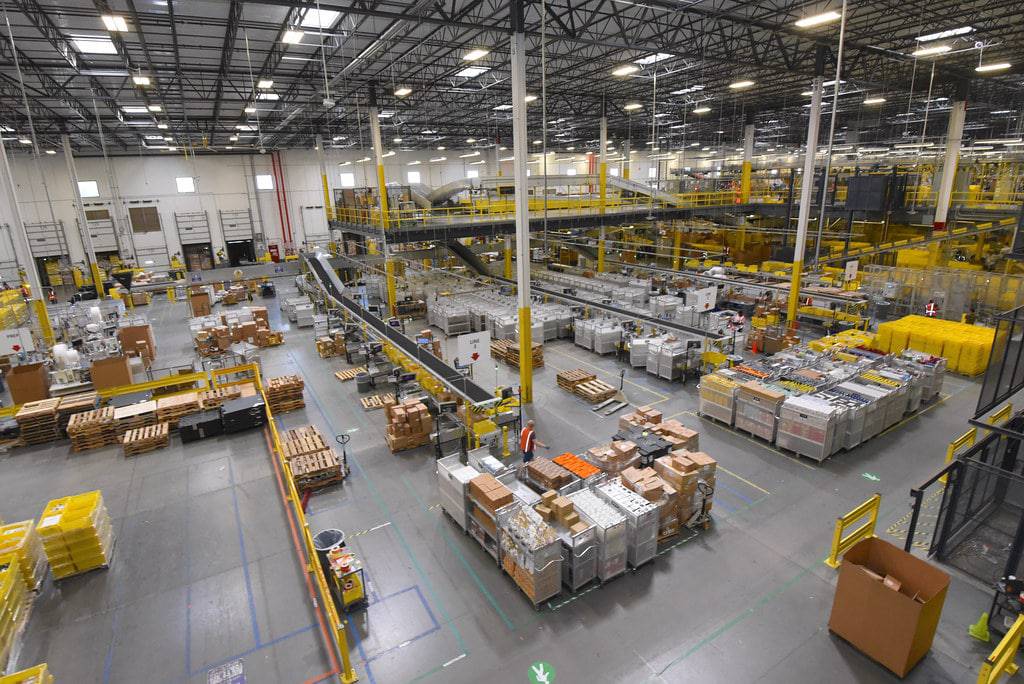
The letter is relatively light on Bezos’ usual brand of insight into business and leadership strategy, but instead focuses on the argument that Amazon will emerge from this crisis not merely alive, but strengthened. This is the implicit message of the Dr. Seuss quote near the end of the letter: “When something bad happens you have three choices. You can either let it define you, let it destroy you, or you can let it strengthen you.”
Bezos considers the new stress that Amazon has been put under to be a productive stress — it’s something that will, in the long run, help Amazon by teaching it how to operate under a chaotic set of circumstances.
In the context of a traditional shareholder letter, the 2019 letter may look unlike previous iterations in terms of the density of Bezos’ philosophizing, but it still sheds light on Amazon’s priorities and core beliefs as a company.
2018: Wandering is an essential counterbalance to efficiency
“Market research doesn’t help. If you had gone to a customer in 2013 and said ‘Would you like a black, always-on cylinder in your kitchen about the size of a Pringles can that you can talk to and ask questions, that also turns on your lights and plays music?’ I guarantee you they’d have looked at you strangely and said ‘No, thank you.’”
Takeaway
Businesses are great at putting plans together. When they know exactly what needs to be built, many companies can execute on their ideas.
Where it gets messier and riskier is when you don’t know exactly what should be built. This is the most fertile and profitable territory for a business, according to Bezos.
To him, wandering — away from the obvious, away from old ideas — is key to Amazon’s success.
Challenge
When you’re a small company, virtually everything you try is an experiment. The bigger you get, though, the more you have to lose, and the less tolerant to risk-taking you can become.
For Bezos, it’s not enough for big companies to prioritize taking risks and “wandering” as much as smaller, more nimble companies do.
It’s that big companies need to scale everything up, “including the size of their failed experiments,” he writes.
“Wandering” isn’t an efficient practice for a business, but it isn’t random. It requires a culture of builders. It requires a deep customer obsession. And it requires an understanding that you should always listen to the people who use your products, but you ultimately must imagine and invent on their behalf. This is inevitably risky. But great companies, he argues, must take those risks.
Solution
For Jeff Bezos, the key to staying innovative and growing is constantly urging employees to “wander” — to pursue creative ideas that, while they might sound odd or useless today, stand to deliver extraordinary value to your customers.
Some experiments will fail: the bigger you are, the bigger your failures should be. But one big success can often make up for all those failed experiments, and more.
“Wandering is an essential counter-balance to efficiency,” he writes. “You need to employ both. The outsized discoveries – the ‘non-linear’ ones – are highly likely to require wandering.”
Bezos traces Amazon’s history of hiring “builders” back to the early days of the company. Year by year, Amazon pushed the online retail space forward, and it grew from an online bookstore to a big box retail store competitor to a global e-commerce juggernaut.
That constant innovation, according to Bezos, came mostly out of Amazon’s willingness to “wander” — to imagine and build the new things that customers might love.
For proof, he points to Amazon Web Services. Today a pillar of Amazon’s business, AWS was at one point nothing more than a hunch. No customer asked for it, but it found immediate demand upon its release. “That same pattern has recurred many times,” he writes, citing Amazon’s development of tools like DynamoDB, Amazon Aurora, ElastiCache, Amazon Go, and the Amazon Echo.
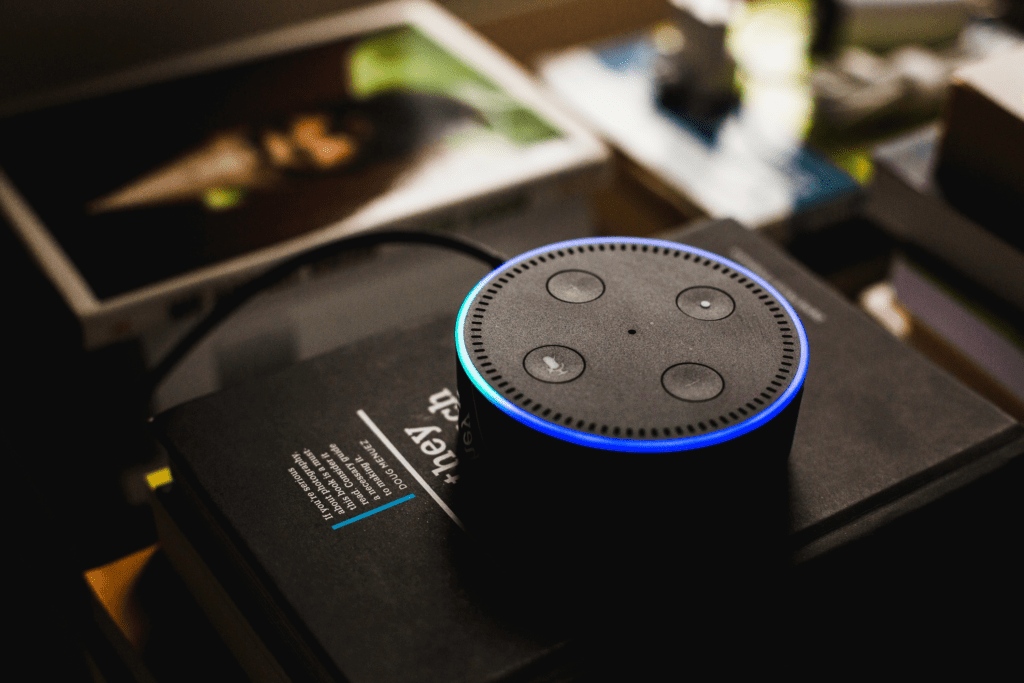
“No customer was asking for Echo,” Bezos writes, “This was definitely us wandering.”
Market research won’t tell you about most of the great inventions that your customers want, Bezos warns, but that doesn’t mean you should ignore them. “It’s critical to ask customers what they want, listen carefully to their answers, and figure out a plan to provide it thoughtfully and quickly (speed matters in business!). No business could thrive without that kind of customer obsession.”
But while customers can tell you what they want, they can never tell you what to build.
“The biggest needle movers will be things that customers don’t know to ask for. We must invent on their behalf,” he says. “We have to tap into our own inner imagination about what’s possible.”
2017: Build high standards into company culture
“How do you stay ahead of ever-rising customer expectations? There’s no single way to do it — it’s a combination of many things. But high standards (widely deployed and at all levels of detail) are certainly a big part of it. We’ve had some successes over the years in our quest to meet the high expectations of customers. We’ve also had billions of dollars’ worth of failures along the way. With those experiences as backdrop, I’d like to share with you the essentials of what we’ve learned (so far) about high standards inside an organization.”
Takeaway
Great companies, like Amazon, are built on high standards.
Bezos argues that despite common thinking that high standards are intrinsic to certain people, high standards can be taught in virtually any domain. And if a company wants to stay competitive, it must teach high standards.
As you grow, you need to make an effort to not just get your own standards up, but to build an organization that can develop and recruit new people with high standards.
Challenge
Today, when people are shopping, they can read reviews of items, compare prices across stores, and research products from their mobile devices with unprecedented ease. The customer is more empowered than ever, and as a retailer, that means you’re never safe from your competition.
Big companies like Amazon are especially at risk in this kind of environment. They need to get technologically ahead of more nimble startup competition — who often have hyperfocus, and little to lose — and do it with far larger organizations.
Solution
To stay competitive, companies need to ensure that standards internally don’t stagnate, but constantly rise along with the customer’s expectations.
Two things hinder the ability to cultivate high standards, according to Bezos:
Scope: Employees are able to recognize high quality in the field, but they have an incorrect idea of how long it’ll take to reach that level themselves.
Recognition: They lack the ability to recognize high quality in the field.
Whether it’s creating a great deck or responding perfectly to a customer question, a major prerequisite of high standards is understanding how difficult it will be to achieve greatness.
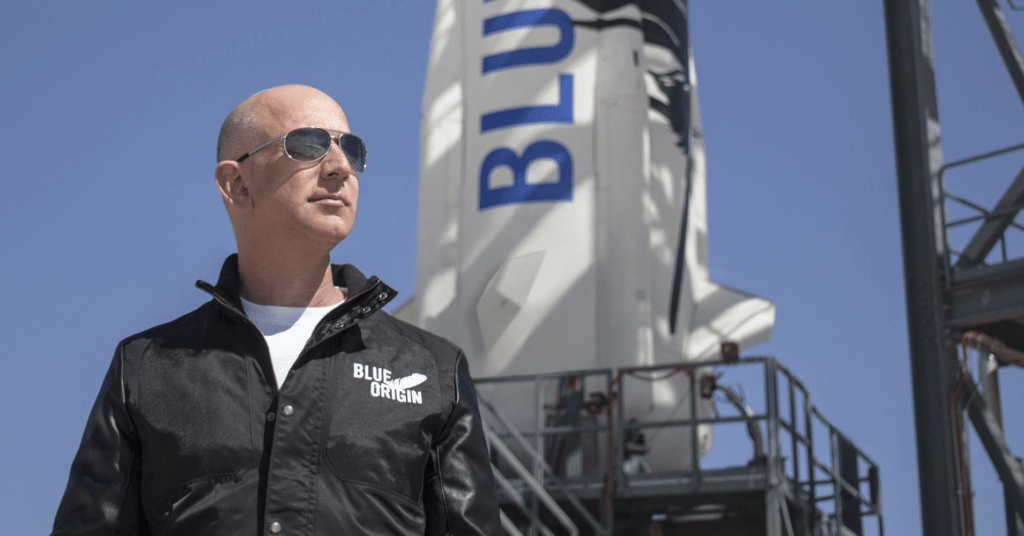
For Bezos, it’s possible to become great at virtually anything, if you can both recognize the level you need to get to and accurately estimate how long it will take to make it.
“To achieve high standards yourself or as part of a team, you need to form and proactively communicate realistic beliefs about how hard something is going to be,” writes Bezos.
“Unrealistic beliefs on scope — often hidden and undiscussed — kill high standards.”The second ingredient is recognition, or being able to understand the difference between bad, good, and great.
If you have leaders who can help the people on their teams both recognize quality and understand scope, Bezos concludes, you will end up building better products and services for your customers.
2016: Move fast and focus on outcomes
“Day 2 is stasis. Followed by irrelevance. Followed by excruciating, painful decline. Followed by death. And that is why it is always Day 1.”
Takeaway
Companies that get complacent die.
Bigger companies are even more at risk because growth and scale make it harder to move quickly when you spot an opportunity.
To stay alive, big companies must strive to make decisions and act faster than startups.
Challenge
At Amazon, it is always Day 1— it’s a powerful refrain that has featured in every shareholder letter since the original.
Day 1 represents originality, enthusiasm, and an eagerness to delight customers.
Day 2, for Bezos, is a powerful concept that embodies everything he fears could happen to Amazon and that does happen to many large organizations.
It is the idea that all of the tools you used to grow, all of the processes you used to scale, and all of the work you did to get to where you are become the company’s undoing. People get stuck in their processes.
Day 2 is the failure to adapt. And the bigger an organization gets, the harder it needs to work to stave off complacency.
Solution
Bezos offers four strategies to fight complacency:
- Stay focused on the customer
- Be skeptical of proxies
- Stay alert for and quickly adopt trends
- Make high-quality, high-velocity decisions
First, measure yourself by your customers. They are always “beautifully, wonderfully dissatisfied,” in Bezos’ words, and if you focus on always trying to make them happier, it’s hard to go wrong.
Second, Bezos warns against allowing process to turn into proxy. When you abstract a task into a process, it’s easy to start managing to the process rather than to the outcome you want. Soon, you have people getting the wrong end result and justifying their actions by saying they “followed the process.”
Bezos suggests that you always keep one eye on the outcome, not whether someone has ticked off every box on a list of steps.
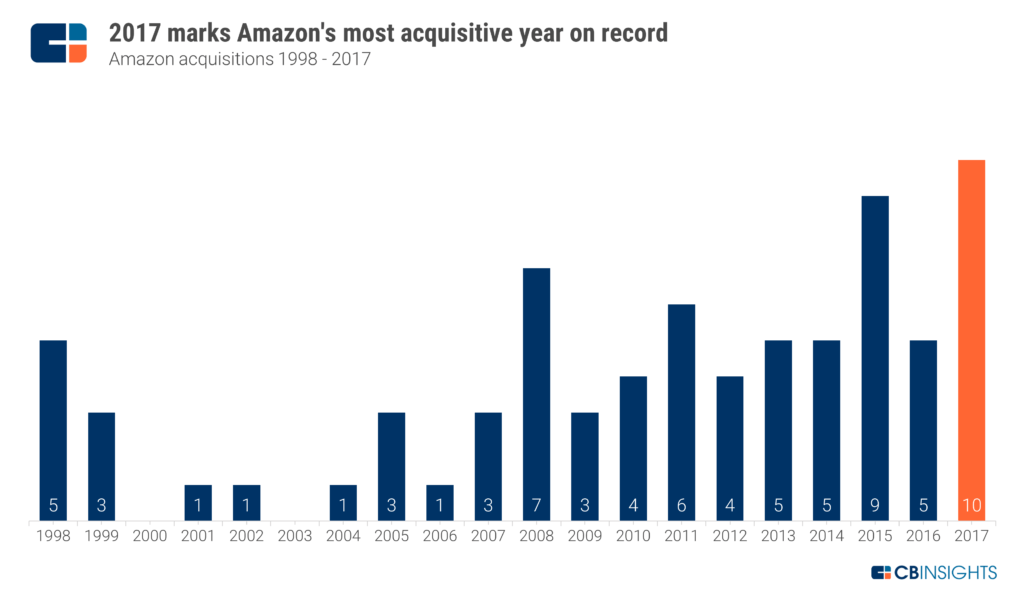
Third, trends like AI and machine learning are big today and will be bigger tomorrow. While it’s not always easy to incorporate these kinds of trends into the work that you do, avoiding them means fighting that future.
Finally, keep up fast decision-making as you grow. Make a point to “disagree and commit” so you can keep things moving forward even in ambiguous, debatable situations.
2015: Don’t deliberate over easily reversible decisions
“Some decisions are consequential and irreversible or nearly irreversible – one-way doors — and these decisions must be made methodically, carefully, slowly, with great deliberation and consultation. . . . But most decisions aren’t like that — they are changeable, reversible — they’re two-way doors. . . . [These] decisions can and should be made quickly by high judgment individuals or small groups.”
Takeaway
Big companies stop being creative because, in large part, their decision-making processes become slower and more drawn out as they scale. Caution creeps in, and people are less likely to move quickly or place risky bets.
For Bezos, the problem is that people treat reversible decisions like momentous problems requiring caution. They miss opportunities that nimbler companies don’t.
To remain innovative as you grow, you need to understand which decisions are reversible and should be executed on quickly, and which have lasting consequences and should therefore be mulled over more slowly.
Challenge
Big companies are less tolerant of failure because they have more to lose, especially if they are public and have shareholders. Companies say they want to remain innovative, but they’re often not willing “to suffer the string of failed experiments necessary to get there.”
But it’s a mistake to take the overly cautious approach. “Every once in a while, when you step up to the plate, you can score 1,000 runs,” Bezos writes.
The key is figuring out how to marry the innovative spirit with the reality of risk aversion that exists at any large organization.
Solution
Amazon’s success, according to Bezos, is rooted in the company’s acceptance of risk.
“I believe we are the best place in the world to fail,” he writes, “and failure and invention are inseparable twins. To invent you have to experiment, and if you know in advance that it’s going to work, it’s not an experiment.”
The way Amazon achieves its risk acceptance mentality, according to Bezos, is through acknowledging which decisions can be easily reversed (and should therefore be decided on by small, fast-moving teams) and which cannot (and should therefore be more carefully considered).
“Failure and invention are inseparable twins.”
He refers to these as two different types of decisions, Type 1 and Type 2.
Type 1 decisions are almost impossible to reverse. They’re “one-way doors.” Type 2 decisions, on the other hand, can easily be reversed. They’re “two-way doors.”
Type 1 decisions should be made slowly and with caution, and Type 2 decisions should be executed quickly.
Mistaking Type 2 decisions for Type 1 slows the team’s pace. It leads to unchallenged risk aversion. And, in the end, it means less innovation.
Bezos’ advises to figure out what types of decisions your organization is making and treat them accordingly. Don’t treat lighter Type 2 decisions like Type 1 decisions. When you know you can reverse the outcome if you don’t like it, don’t get too mired in details and projections (no one will know the outcome until it actually occurs), and don’t let the project suffer death by committee. Just execute.
2014: Bet on ideas that have unlimited upside
“A dreamy business product has at least four characteristics. Customers love it, it can grow to very large size, it has strong returns on capital, and it’s durable in time—with the potential to endure for decades. When you find one of these, don’t just swipe right, get married.”
Takeaway
Be aggressive about placing bets on dreamy business ideas. You’ll have failures, but sufficiently big winners will more than make up for all of your failed experiments.
Challenge
Many relationships, particularly business ones, require bold moves to get going. And to find true success, you have to commit for the long haul. The problem is that these moves don’t just appear risky — often, they’re hard to rationally justify at all.
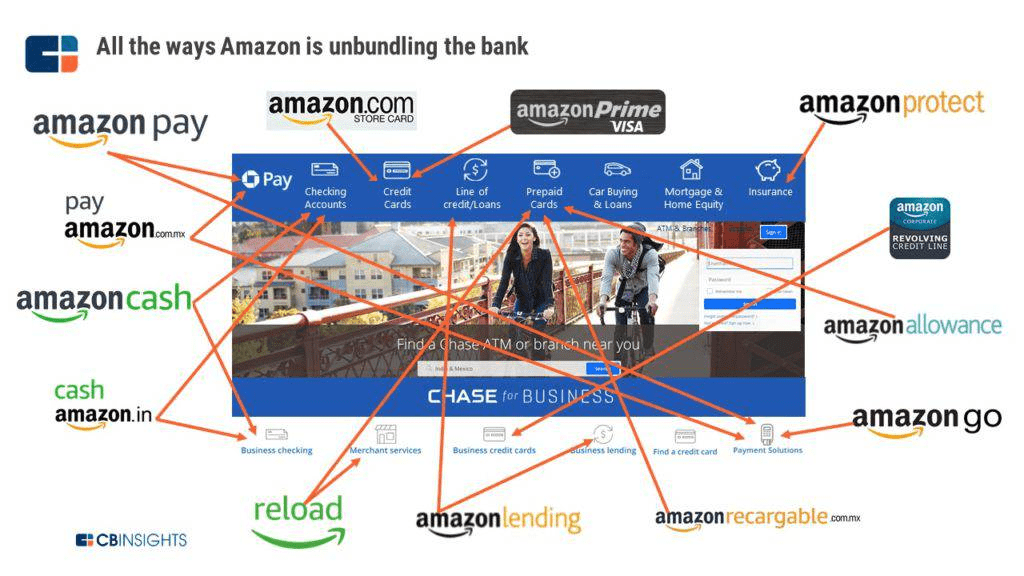
Organizations that want to make data-driven decisions often have a difficult time with placing risky bets because those bets often don’t have clear quantitative evidence to support them. If they did, there wouldn’t be a risk of failure, there wouldn’t be experiments, and there wouldn’t be such a big upside.
Solution
Place your bets where your downside is capped but your upside is unlimited.
For Bezos, the best bets are on dreamy businesses. You know you have a “dreamy” business idea when:
- Customers love it
- It has the potential to become very large
- It has the potential of very strong returns
- It has the possibility to endure
Each of the three major bets that Bezos mentions in this letter — Marketplace, Amazon Web Services (AWS), and Prime — was a risky idea.
With Prime, for example, no one on the Amazon team could point to numbers showing that giving customers free shipping for a yearly fee would ever pay for itself.
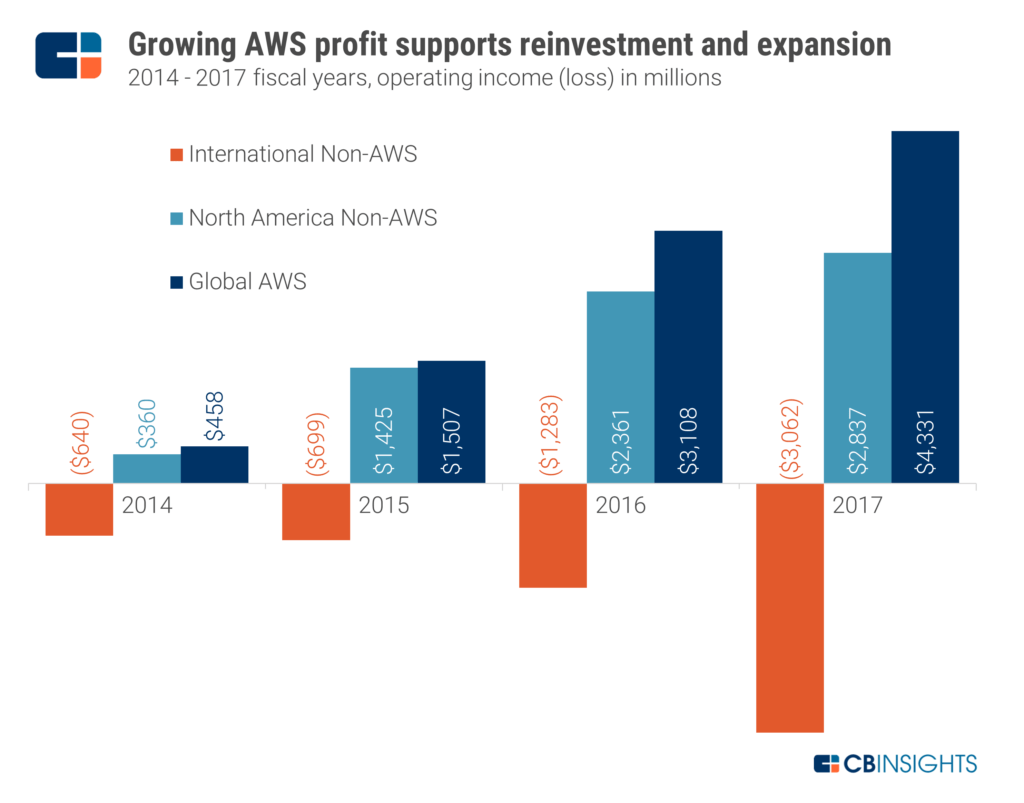
Today, each of these three bets is a pillar of Amazon’s business. In fact, in 2017, all of Amazon’s operating income came from AWS, a once-risky bet on a “dreamy” business idea. With almost $17.5 billion in sales in 2017, and about $4.5 billion in profit, it was Amazon’s second-largest source of revenue.
Not every bet that Amazon has ever placed has succeeded. The company was a significant shareholder in both Pets.com and living.com, for example. They lost their investment but stood to gain so much more if they turned outright.
2013: Decentralize decision-making to generate innovation
“We have the good fortune of a large, inventive team and a patient, pioneering, customer-obsessed culture — great innovations, large and small, are happening everyday on behalf of customers, and at all levels throughout the company. This decentralized distribution of invention throughout the company — not limited to the company’s senior leaders — is the only way to get robust, high-throughput innovation.”
Takeaway
Innovation comes from distributed decision-making. Top-down teams are effective at optimizing existing processes and enforcing the completion of work, but only decentralized, bottom-up teams can consistently generate new ideas.
Challenge
In most big companies, command-and-control is the way that work gets done. Ensuring that important decisions only get made by those at the top maintains a certain level of quality and keeps everything stable.
Building a business that is continuously throwing off new ideas and innovating, on the other hand, requires that your people have leeway. You need autonomous teams that can exercise their own judgment rather than having to submit every idea they have to a committee. It requires your company to recalibrate how it hires, how it takes risks, and the opportunity it offers to even junior employees.
Solution
Its culture of creativity is a large part of why Amazon has been so successful on so many fronts, and why it has risen to the second-largest company by market cap in the world.
That creativity is often actually a function of the proactive way Amazon thinks about customers. Rather than wait for their customers to tell them about something they want, Bezos says, Amazon would always rather create the thing they don’t even know they want yet.
To encourage this kind of innovation inside your company, however, you need to have distributed decision-making and autonomy for more than just your senior staff.
At Amazon, employees who have an idea are encouraged to pursue it, even if they have to upset traditional corporate rules to do it.
Great innovations come from a “large, inventive team” with a “patient, pioneering, customer-obsessed culture” rather than from a small braintrust.
If you’re a junior employee at Amazon and you have an idea for some new way to delight customers, Bezos writes, you’re just as encouraged to give it a try as a senior leader. Experiments can start small. The downside of a small failed experiment is low, but the potential upside can be very high.
2012: Surprise and delight your customers to build long-term trust
“When we’re at our best, we don’t wait for external pressures. We are internally driven to improve our services, adding benefits and features, before we have to. We lower prices and increase value for customers before we have to. We invent before we have to.”
Takeaway
In the short term, spending money to deliver value above what your customers could reasonably expect looks foolhardy — in the long run, it could be your competitive advantage.
Proactively bringing value to your users and delighting them builds attachment and trust. Build enough of it, and you create a connection with your customers that becomes hard to break.
Challenge
On Wall Street, delivering value above and beyond what your customers expect is not considered a sensible decision — especially if it costs money. One early critic of Amazon derisively described the company as a “charitable organization being run by elements of the investment community for the benefit of consumers.” This kind of attitude has become so pervasive that for many businesses, it’s seen as safer to move in lockstep with your competitors, never falling behind but never advancing ahead of them either.
Solution
Building a great customer-centric company over the long-term doesn’t happen when you’re only reacting to your competitors.
Proactively delighting your users costs money, but it pays off when you distinguish yourself — your customers stick around for longer and they pay you more.
The longer a company is able to retain its customers, the less it needs to spend on acquisition or marketing. The more revenue it drives from each customer, the stronger its business.
For Amazon, building a high lifetime value among its customer base through proactive delight has been a powerful differentiator. The average lifetime value of a Prime customer was estimated at $2,500 in 2017, well over the $150 average in e-commerce.
2011: Self-service platforms unlock innovation
“I am emphasizing the self-service nature of these platforms because it’s important for a reason I think is somewhat non-obvious: even well-meaning gatekeepers slow innovation. When a platform is self-service, even the improbable ideas can get tried.”
Takeaway
A platform that other people can use to generate value will always be more powerful than a controlled, walled garden that you control and populate with your own content.
Incentivize people to use your self-service platform, and you can build a much larger business than you could even as a well-meaning gatekeeper.
Challenge
The main impediment to platform creation today is technology. Companies that do not invest in technology that can turn their work into a platform are going to fall behind.
Solution
Amazon has disrupted traditional publishing similarly to how it disrupted traditional retail: by building a platform for other people to use to sell their wares.
In publishing, agents and editors decide what is quality and what’s not. They only have the resources to produce and market a certain number of books every year, so they can’t publish everything that comes across their desks.
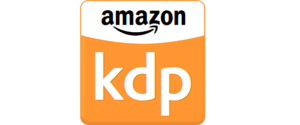
With Kindle Direct Publishing, authors can set their own list prices for written work, control their rights, and get their books in front of readers around the world in less than 48 hours. No gatekeeper needed.
Amazon provides the same type of self-service platform for internet companies through AWS and merchants via Fulfillment by Amazon. “These innovative, large-scale platforms are not zero-sum — they create win-win situations and create significant value for developers, entrepreneurs, customers, authors, and readers,” and of course, Amazon.
2010: R&D should pervade every department
“And while many of our systems are based on the latest in computer science research, this often hasn’t been sufficient: our architects and engineers have had to advance research in directions that no academic had yet taken. Many of the problems we face have no textbook solutions, and so we — happily — invent new approaches.”
Takeaway
Software is eating the world, and that means that technology should infuse everything that you do as a company, no matter your core competency.
With the speed at which technology advances and improves, investing in becoming a tech company will let you move much faster than your competition.
Challenge
Shareholders, executive teams, and boards aren’t always aware of the most up-to-date advances in infrastructure technology, machine learning, and software architectures. It’s not necessarily easy to explain why you’re doing your own cutting edge research on these kinds of topics rather than focusing on your company’s main line of business.
Solution
You can’t expect to progress technologically if you’re siloing your company’s technology work in some kind of R&D department, Bezos writes.
At Amazon, technology pervades everything — every process, every decision, and every businesses.
Because of this approach, it can point to any product or line of business in the company and show how its dominance is rooted in technology, from the site’s search engine to Kindle.
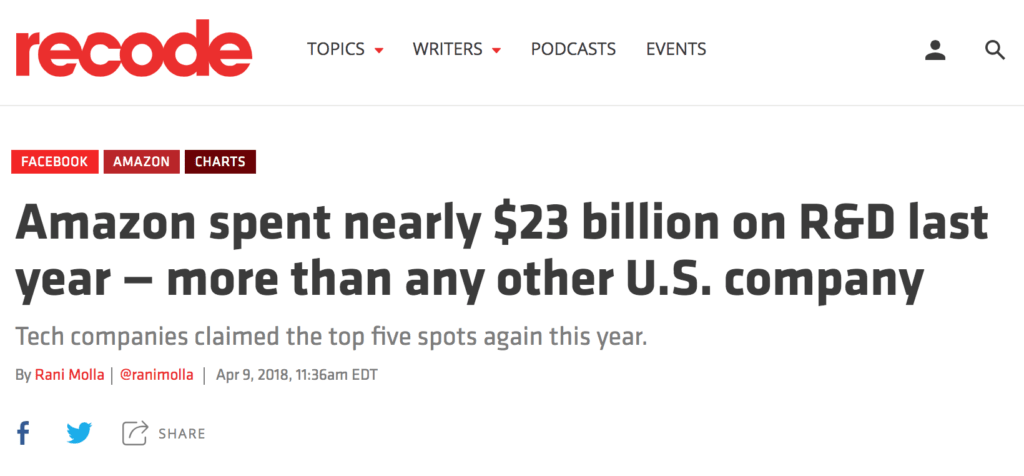
Even Amazon Web Services — today one of Amazon’s main pillars and its largest driver of profit — was born from a piece of internal technology.
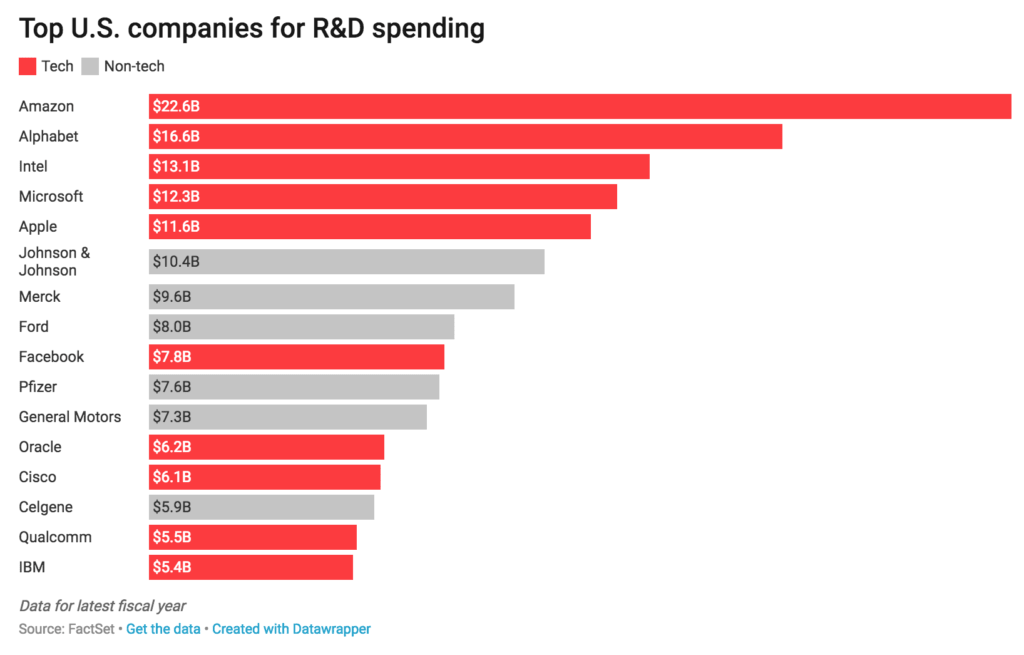
Technology isn’t just something that Amazon invests in so it can keep up with their competition. It’s how it tries to make core products better.
2009: Focus on inputs — the outputs will take care of themselves
“Senior leaders that are new to Amazon are often surprised by how little time we spend discussing actual financial results or debating projected financial outputs. To be clear, we take these financial outputs seriously, but we believe that focusing our energy on the controllable inputs to our business is the most effective way to maximize financial outputs over time. . . . Our goal-setting sessions are lengthy, spirited, and detail-oriented. We have a high bar for the experience our customers deserve and a sense of urgency to improve that experience.”
Takeaway
When you’re setting goals for a business or a product, focus on inputs you can control, not on financial outputs.
Over the long term, investing your effort in the parts of the customer experience that you can control is what generates success for your company financially.
Challenge
The majority of large, public companies benchmark success by quarterly and annual financial results. They know their boards will assess them using these numbers, so they focus their teams on hitting financial goals. The problem is that incentivizing a team to hit certain numbers doesn’t always incentivize them to do the right things for their customers.
Solution
Instead of setting goals and judging your company’s efforts using financial outputs, work on perfecting your inputs, and trust that the outputs will handle themselves.
In this letter, Bezos mentions several key inputs he and his team assessed throughout 2009, including:
- The # of reviews added to Amazon products
- The # of different items available for immediate shipment on Amazon Prime
- The # of new product categories available
The more reviews added to Amazon products, the better a new customer’s understanding of whether that product is worth buying or not, and the more trust they can place in the platform.
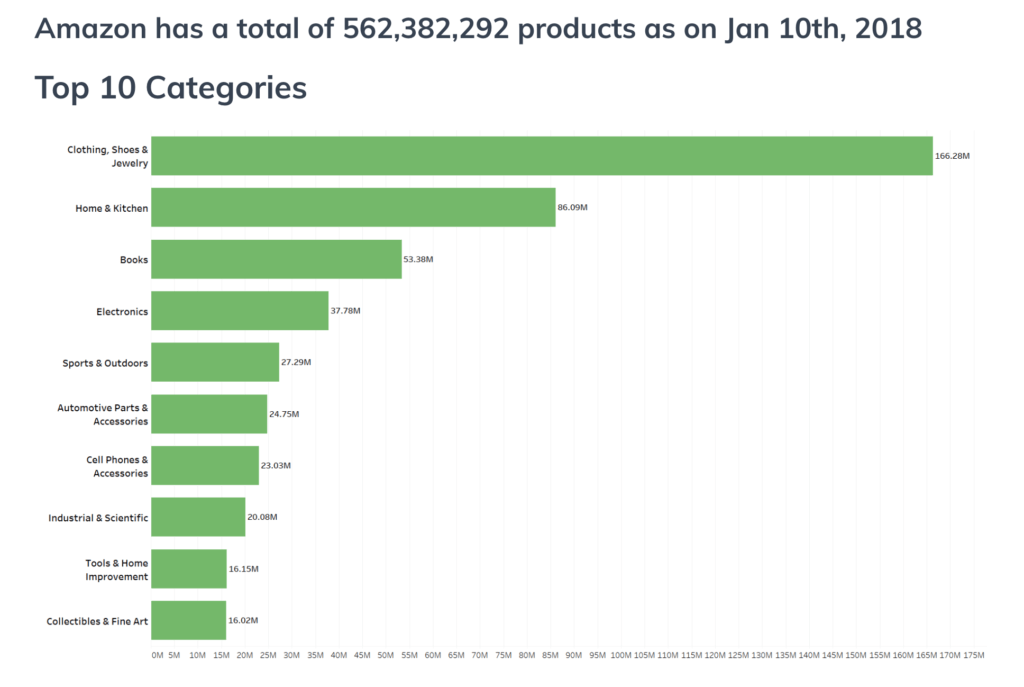
The more items available for immediate shipment on Prime, the more choice a customer has, and the less likely they are to go somewhere else to find an item the next time.
If you can choose inputs that correlate with a great experience for your customers, then working on those will likely bring financial outputs up over the long-term.
2008: Work backwards from customer needs to know what to build next
“’Working backwards’ from customer needs can be contrasted with a ‘skills-forward’ approach where existing skills and competencies are used to drive business opportunities. The skills-forward approach says, ‘We are really good at X. What else can we do with X?’ That’s a useful and rewarding business approach. However, if used exclusively, the company employing it will never be driven to develop fresh skills.”
Takeaway
Some companies figure out what to build next by thinking about what they’re already good at doing today — a good approach in some cases, Bezos says, but not always.
If you want to delight and amaze your customers and develop fresh lines of business, you need to think backwards from what your customers need.
Challenge
As a company, it’s more straightforward to rely on a skills-forward approach. Over time, you develop expertise in certain fields. Deciding what to do next based on the expertise you’ve already developed is often a good way to leverage your competence in one area into new successes.
The problem is that this method will never bring you new skills or capabilities. You’ll never learn how to do new things, and that will ultimately hurt your ability to innovate.
Solution
To take your business to the next level, start by thinking about what your customers want or need, and work backwards to figure out what you can build.
When the Kindle project started, the vision was simple — the capability for any book ever printed to be accessed in less than 60 seconds. That was it: the product was no more determined than that.
Although Amazon had never built a hardware device before, the team focused on fulfilling that vision. They hired people with the right skills to engineer that vision, rather than trying to create a product better suited to Amazon’s existing skills.
The Kindle software and hardware emerged organically out of the Amazon team’s attempt to answer that product vision, and the result became another powerful arm of Amazon’s business.

Thinking backwards from customer needs rather than seeking the path of least resistance at each juncture allows Amazon to be both successful and creative. That’s what has allowed them to reinvent the company time and time again.
2007: Missionaries build better products
“We started by setting ourselves the admittedly audacious goal of improving upon the physical book. We did not choose that goal lightly. Anything that has persisted in roughly the same form and resisted change for 500 years is unlikely to be improved easily. At the beginning of our design process, we identified what we believe is the book’s most important feature. It disappears. When you read a book, you don’t notice the paper and the ink and the glue and the stitching. All of that dissolves, and what remains is the author’s world.”
Takeaway
When you’re trying to build something totally new, hire missionaries.
Missionaries — people who are passionate and empathetic about products — are always going to be better equipped to disrupt existing incumbents.
Challenge
Many everyday products and systems we take for granted are, in one way or another, “good enough.” Physical books, taxi cabs, hotels — they get the job done, even if they can be seen as outmoded, archaic institutions.
With these kinds of institutions, inertia sets in. Getting people to adopt a new habit or start using a new product when they’re accustomed to using something “good enough” is a very difficult task.
Solution
Missionaries are people who understand the appeal of the old ways. They understand why the “good enough” product is “good enough,” and because of that, no one else is better positioned to disrupt that business than them.
Bezos calls back to the original launch of Amazon, when people believed an online bookstore needed to have all the features of a physical book stores. Critics asked him how they would do “electric book signings.”
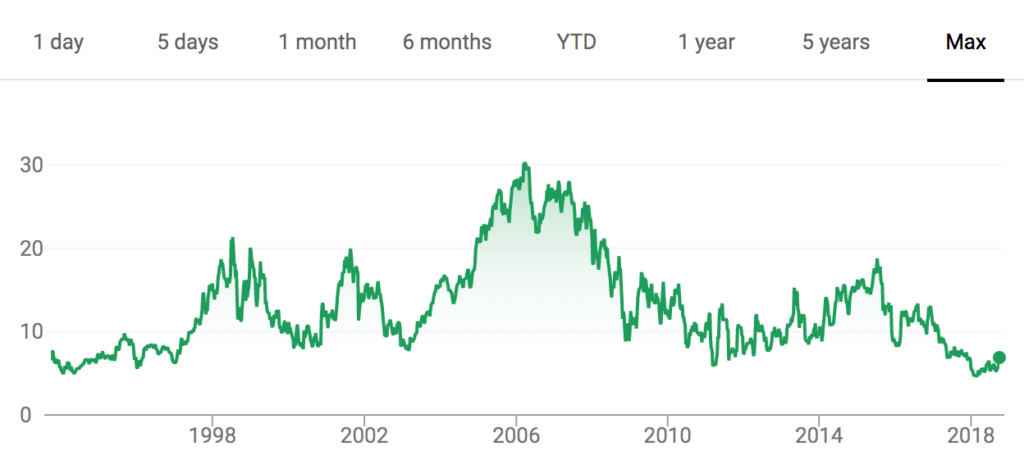
The Amazon team didn’t know. They did know that they could provide far greater value than physical bookstores in at least one area, by offering millions of different titles and thousands of different customer-submitted reviews.
With the Kindle, the team of missionaries at Amazon knew that the sentimentality of the book was strong. After all, books have been around in the same form for hundreds of years. In trying to build a “better book,” they knew they had to emulate the best aspects of the book.
One of the best aspects of a physical book, they realized, was that books get “out of the way.” The Kindle’s e-ink screen and fast page switching emerged directly from the realization that they needed to make sure the interface got out of the way and let readers focus on their books. With missionaries building the product, Bezos said he believed the Kindle, would “‘start a fire’ and improve the world of reading.”
Amazon didn’t wipe Barnes & Noble‘s off the map — as Amazon didn’t (and couldn’t) replace everything B&N does. Amazon could just do (and did) an exponentially better job at one of their more profitable core functionalities.
2006: Nurture your seedlings to build big lines of business
“In some large companies, it might be difficult to grow new businesses from tiny seeds because of the patience and nurturing required. In my view, Amazon’s culture is unusually supportive of small businesses with big potential, and I believe that’s a source of competitive advantage.”
Takeaway
New business lines start out as seedlings. Often, they won’t meaningfully contribute to revenue for many years. But if you have the patience to nurture those seedlings, you can end up with powerful new revenue lines.
Challenge
Making long-term investments in small internal businesses can be difficult in a fast-paced corporate environment.
Large corporations are good at executing on predetermined strategies, but they struggle to slow down and give new business lines time to develop.
Public markets judge performance on a quarterly basis, and salaries, promotions, and layoffs also based on these figures. It is difficult to go against the grain and accept projects that might not see returns for some time (or at all).
Solution
While you need concrete insights and metrics to bet on a new idea, you also need patience and nurturing to make it thrive.
At Amazon, Bezos emphasizes that even if a new business enjoys runaway success, it will only begin to contribute meaningfully to company economics in three to seven years. Accepting that kind of timeframe as normal is the first step to building new innovative businesses inside your company.
Fulfillment by Amazon and AWS, for example — now major winners for Amazon — began as seed investments.
2005: Don’t get fixated on short-term numbers
“Math-based decisions command wide agreement, whereas judgment-based decisions are rightly debated and often controversial, at least until put into practice and demonstrated. Any institution unwilling to endure controversy must limit itself to decisions of the first type. In our view, doing so would not only limit controversy — it would also significantly limit innovation and long-term value creation.”
Takeaway
Some decisions can be made with data, but many of the important business decisions can only be made with judgment.
Many opportunities with fantastic upside won’t make sense in the short-term — to identify these, you have to think about what makes the most sense for your customers.
Challenge
When opening a new fulfillment center or deciding how much of a product to hold in inventory, you can always look at existing data to figure out the option that will most improve the customer experience.
But huge, business-making improvements — like Amazon’s decision to create Amazon Prime — often don’t have clean math behind them. According to the models Amazon had at the time, Prime actually seemed like a terrible idea. Often, your best decisions will.
Solution
When trying to weigh personal instincts versus quantitative models, use the customer experience to tip the scales.
Decisions that make sense on paper but don’t improve the customer experience may have limited upside. Decisions that undeniably benefit your customers can have significant upside, and sometimes the potential upside is so big that it’s worth risking the numbers not working out.
When Amazon first considered a free shipping service like Prime, quantitative models pointed to raising prices on shipping, not to making shipping free. If it raised prices, the models said, the company probably wouldn’t lose that many customers and it would make a lot more money.
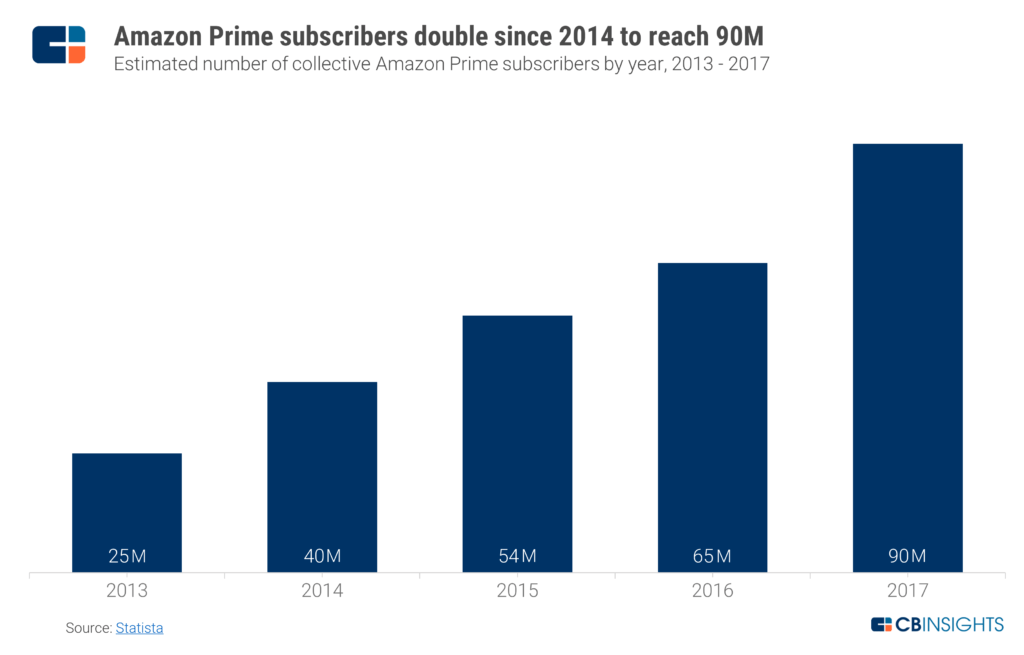
If Amazon had focused just on that data when deciding whether or not to introduce Prime, it would not have rolled out the service. But the team’s judgment was simple: if they kept lowering prices, it would lead to a greater volume of purchases, and ultimately that would mean greater customer loyalty over the long term. That bet paid off.
2004: Free cash flow enables more innovation
“Though some may find it counterintuitive, a company can actually impair shareholder value in certain circumstances by growing earnings. This happens when the capital investments required for growth exceed the present value of the cash flow derived from those investments.”
Takeaway
Prioritizing free cash flow will allow you to experiment and innovate quickly, as capital won’t be tied up in investments that could be irrelevant by the time they’re paid off. In today’s fast-moving business environment, this is essential to keep from falling behind.
Challenge
Many public companies prioritize metrics like earnings per share or earnings growth when benchmarking their performance. Media coverage, analyst reports, and public opinion all play a role in developing this focus, but it can be ultimately counterproductive for a large enterprise to concentrate on increasing its earnings, even when its primary obligation is to its shareholders.
As Bezos reminds us, “Earnings don’t directly translate into cash flows, and shares are worth only the present value of their future cash flows.”
Solution
The solution to building a financially durable and growth-ready company is to focus less on earnings, and more on free cash flow.
If you build a business with earnings growth but no free cash flow, it’s often a poor investment over the long term.
Structuring your business to prioritize free cash flow will look different from industry to industry, but Amazon does it in a few key ways:
- The company turns over inventory quickly
- It collects payments from customers before payments to suppliers are due
- It minimizes its investment in its own inventory
Amazon maintains a cash generative operating cycle and can keep its investments in fixed assets low, at only 4% of all sales in 2004.
2003: Long-term thinking is rooted in ownership
“Long-term thinking is both a requirement and an outcome of true ownership. Owners are different from tenants. I know of a couple who rented out their house, and the family who moved in nailed their Christmas tree to the hardwood floors instead of using a tree stand. Expedient, I suppose, and admittedly these were particularly bad tenants, but no owner would be so short-sighted. Similarly, many investors are effectively short-term tenants, turning their portfolios so quickly they are really just renting the stocks that they temporarily ‘own.’”
Takeaway
If you want to build a successful company for the long term, build a company of owners.
With the mentality of a service provider, you will seek short-term gains and sacrifice future growth.
With the mentality of an owner, you will always act in the best interests of your customers and your team. In the end, the work you do acting as an owner will coincide with the interests of your shareholders.
Challenge
It can be difficult to take a long-term view when Wall Street and other stakeholders tend to look for fast results. Doing the best thing for the long-term needs of your company doesn’t always coincide with the most expedient or profitable thing in the short term.
That’s because “many investors are effectively short-term tenants,” Bezos writes. Many investors are not looking for long-term success — they want dividends tomorrow.
But it’s not just a problem for investors: the short-term focus also tends to infect the people who run companies.
Thinking long term and building a successful growth company means getting out of that short-term investor mindset and thinking like an owner.
Solution
Taking a long-term view often requires deep consideration of your business model, and it doesn’t always make everyone happy.
When Amazon first started allowing customers to review their products, they got angry feedback from some vendors who asked why they allowed negative reviews on a site where profit came from sales.
For Bezos and the rest of Amazon, the long-term benefit was that customers would trust Amazon to provide them with quality products and transparent information. And “though negative reviews cost us some sales in the short term,” he writes, “helping customers make better purchase decisions ultimately pays off for the company.”
The same goes for Amazon’s pricing: “Our pricing strategy does not attempt to maximize margin percentages,” he writes, “but instead seeks to drive maximum value for customers and thereby create a much larger bottom line.”
Every decision that gets made at Amazon gets made through “the context of the customer experience.” They design it with long-term owners in mind. And in the end, they trust — and ask that their shareholders trust — that it will ultimately pay off.
2002: Build your business on your fixed costs
“One of our most exciting peculiarities is poorly understood. People see that we’re determined to offer both world-leading customer experience and the lowest possible prices, but to some this dual goal seems paradoxical if not downright quixotic. Traditional stores face a time-tested tradeoff between offering high-touch customer experience on the one hand and the lowest possible prices on the other. How can Amazon.com be trying to do both?”
Takeaway
Companies driven by technology have an incredible advantage because much of their value hinges on fixed costs.
If you want to provide the best possible customer experience and the lowest possible prices in your industry, it’s only possible if you can make much of your customer experience expenses fixed.
Challenge
Traditionally, you have a trade-off between customer experience and price. Sell your products at a higher price and you reap enough money to hire and train more people to provide a better experience. Sell at a lower price and the customer experience will take a hit.
Achieving both low prices and a great customer experience would seem to be a contradiction.
Solution
To achieve both low prices and a great customer experience, harness the power of fixed costs.
Amazon turned their customer experience — their recommendations engine, personalization, etc. — into a fixed cost. It is based on technology that it built and now only pay to maintain, which means it doesn’t get (much) more expensive over time.
That allows the cost of running Amazon to actually shrink over time as a percentage of the revenue that Amazon makes.
Remaining disciplined while keeping its operating cash flow steady was one of the tactics that brought Amazon through the dot-com bust in 2000. Not only was the company continuing to generate sales, but it didn’t spend much on its platform. Being relatively low-cost to begin with, the platform was able to continue functioning on a low budget. While competitors folded, Amazon survived, took a leading market position, and was able to invent and grow.
2001: Measure your company by your free cash flow
“Why focus on cash flows? Because a share of stock is a share of a company’s future cash flows, and, as a result, cash flows, more than any other single variable, seem to do the best job of explaining a company’s stock price over the long term.”
Takeaway
Because “a share of stock represents a share of that company’s future cash flows,” free cash flow is the best possible metric for understanding financial success as a business.
Free cash flow should be prioritized because it is pegged to your company’s value both today and in the future.
Challenge
It can be hard to prioritize free cash flow when public sentiment (especially stock prices) usually moves in line with revenues and profits. Few CEOs are able to hold their ground against the pressure of quarterly earnings results.
Communication is a critical (and often undervalued) way to highlight progress. While press releases and MD&A sections in SEC filings add some color to numeric results, they don’t usually allow much space for subtleties outside of their templates.
Solution
In Bezos’ original 1997 letter (discussed below), he made it clear to his new investors exactly how Amazon thought about free cash flow vs. GAAP accounting.
With each subsequent letter, he has enclosed a copy of that original letter to remind shareholders of Amazon’s outlook on this question.
For Bezos, focusing on free cash flow provides a clear method of valuing Amazon for internal planning purposes, as well as for investors.
The metric represents how much value each individual share of stock in a company has today and stands to have in the future.
“Ultimately, your determination of cash flow per share will be a strong indicator of the price you might be willing to pay for a share of ownership in any company,” he writes.
Over the years, Bezos’ constant advocacy for the idea of focusing on free cash flows has turned the idea into a more common and accepted view.
2000: In lean times, build a cash moat
“The year 2001 will be an important one in our development. Like 2000, this year will be a year of focus and execution. As a first step, we’ve set the goal of achieving a pro forma operating profit in the fourth quarter. While we have a tremendous amount of work to do and there can be no guarantees, we have a plan to get there, it’s our top priority, and every person in this company is committed to helping with that goal. I look forward to reporting to you our progress in the coming year.”
Takeaway
Focusing on free cash flow or otherwise giving your business some form of cash moat (whether through outside equity, debt stakes, or tight operations) will help ride out difficult times when customers aren’t buying and/or financing has dried up.
If you’re able to maintain composure while others fall, you have the opportunity to come out ahead and capture a much bigger market share.
Challenge
The dot-com bubble took down a slew of internet companies, including Pets.com and fashion site Boo.com. Amazon, too, nearly went bankrupt.
Between 1995 and 2000, the NASDAQ rose from under 1,000 to over 5,000. Following its peak at 5,048, panic ensued, and the index lost trillions within the year.
While the majority of tech upstarts folded during the crash, Amazon stayed afloat. Since March 2000, the company has grown about 20x in market value.
Solution
One reason that Amazon was able to ride out the downturn was the tight cash conversion cycle.
While some companies left inventory in stock for long periods of time, Amazon was always focused on minimizing this to a few days at most, and collecting payments from customers before paying suppliers. This avoided lag times and ensured that Amazon continued to have cash coming in while others were bleeding dry.
Prioritizing free cash flow and being extremely disciplined with their operating cash flows gave Amazon a sound foundation they could use to ride out tough times and ultimately come out ahead.
1999: Build on top of infrastructure that’s improving on its own
“The current online shopping experience is the worst it will ever be. It’s good enough today to attract 17 million customers, but it will get so much better. Increased bandwidth will result in faster page views and richer content. Further improvements will lead to ‘always-on access’ (which I expect will be a strong boost to online shopping at home, as opposed to the office) and we’ll see significant growth in non-PC devices and wireless access. Moreover, it’s great to be participating in what is a multi-trillion dollar global market, in which we are so very, very tiny. We are doubly-blessed. We have a market-size unconstrained opportunity in an area where the underlying foundational technology we employ improves every day. That is not normal.”
Takeaway
The biggest opportunities in tech are platform-driven.
When you build on an infrastructure that’s beginning to quickly develop and modernize, you reap the benefits of not just your own growth but also the growth of the infrastructure you’re building on.
Challenge
Building on established platforms is the easiest and most expedient route, but one with the least upside.
Established platforms offer the most integration, often have low barriers to entry, and have plenty of accumulated wisdom around them.
At the same time, their growth potential is often limited due to the high pace of technological innovation across industries.
Solution
With the rise of internet connectivity in the late 1990s, an increasing divide began to appear between industries. E-commerce, gaming, online financial services were industries where a strong footing established early could set the stage for huge growth.
While Bezos was helped by growth in the e-commerce field specifically, and in access to high-bandwidth connections more generally, he didn’t find himself there unexpectedly.
Before Amazon, Bezos was vice president at the hedge fund D. E. Shaw & Co, where he saw the rise of the internet firsthand.
Bezos knew he wanted to build a technology company, and he consciously looked to hire the most talented infrastructure engineers he could find to build new solutions where none existed.
Building on a high-growth platform like Amazon did require a much higher degree of upfront investment in engineering and research, but on the long timeframe of technological improvement, it gives you a much higher chance of building a huge, long-term business.
1998: Stay terrified of your customers
“I constantly remind our employees to be afraid, to wake up every morning terrified. Not of our competition, but of our customers. Our customers have made our business what it is, they are the ones with whom we have a relationship, and they are the ones to whom we owe a great obligation. And we consider them to be loyal to us — right up until the second that someone else offers them a better service.”
Takeaway
In business, the most important thing isn’t what your competition is doing. If you’re expending effort trying to follow your rivals’ every move, you’re losing the big picture.
Keeping pace with your customers is what will keep you informed, relevant, and competitive.
Challenge
Companies are usually wary of their competition.
Understanding where they stack up against rivals, particularly if they’re public and continually judged on relative value multiples like price to earnings (PE), is a key pillar of their business strategy. If they can come in top of class, it’s easier to attract investment.
But the issue with thinking like your rivals is that you start to make similar moves. In fast food, for example, McDonald’s, Burger King, Wendy’s, Chick-fil-A all start to blend together. The only ways to differentiate is to narrow down to price and brand. As competition heats up in these crowded areas, it’s increasingly difficult to gain an advantage.
Solution
Flip the focus inward and hone in on your customers. Obsess over their preferences, their shopping behaviors, the quality of their reviews. This will allow you to optimize product features and overall product mixes. You’ll be able to double down on what works and eliminate what doesn’t. If you have a self-service platform like Kindle, find out everything users are creating and where they’re hitting roadblocks.
This granular focus on your true partners will allow you to invent in ways you (and your peers) didn’t anticipate. You’ll begin to develop away from your rivals and stand apart from the pack. This is a core tenet of Bezos’ philosophy. In his words:
“We hold as axiomatic that customers are perceptive and smart, and that brand image follows reality and not the other way around.”
If you don’t do everything in your power to align with customers’ shifting needs, and instead allow yourself to be distracted by competitors, you’ll quickly lose them.
1997: Bring on shareholders who align with your values
“We first measure ourselves in terms of the metrics most indicative of our market leadership: customer and revenue growth, the degree to which our customers continue to purchase from us on a repeat basis, and the strength of our brand. We have invested and will continue to invest aggressively to expand and leverage our customer base, brand, and infrastructure as we move to establish an enduring franchise.
Because of our emphasis on the long term, we may make decisions and weigh tradeoffs differently than some companies.”
Takeaway
Don’t let short-term success, including going public, distract from the long-term focus. Amazon’s are market leadership, customer growth, retention, and brand — even if these come at the expense of near-term profits or the risk of negative “Wall Street reactions.”
A steady approach pays off. After Amazon’s IPO, its stock was priced at around $18 per share. Today, it’s nearly $1,800 per share, a more than 100x increase.
Key to this growth has been Bezos’ clear, consistent message. Each year, it helps attract investors who share the company’s vision and maintains their financial support even when Amazon is at odds with the norm.
Challenge
Building an e-commerce company in the early days of the internet meant building on the precipice of huge growth, in terms of infrastructure and huge changes in consumer behavior. Taking advantage of these opportunities meant investing all available cash into growing and delivering value to customers.
Amazon would never focus on profits or shareholder returns directly, Bezos explained in 1997. Instead, he said, Amazon would focus 100% of its energy on building value for its customers.
When his first letter to shareholders was composed in 1997, Amazon was already a successful company by some metrics — 838% year-over-year growth had recently brought the online bookstore’s revenues to $148M. But much of Wall Street was skeptical of the still-unprofitable company that had just gone public, didn’t pay dividends, and didn’t seem to care about becoming profitable.
In that first letter, Bezos didn’t try to convince investors that Amazon was profitable — instead, he explained why profitability was the wrong metric by which to judge a company like Amazon.
Solution
Amazon’s real strength is scale. As a company grows, if it’s smart about its costs, these can be minimized while sales increase. Margin expansion follows, and a team suddenly has a chance to grow at a faster and faster rate. More customers also mean more data, which leads to even greater decision-making power.
Shareholders who understand this can reap exponential gains.
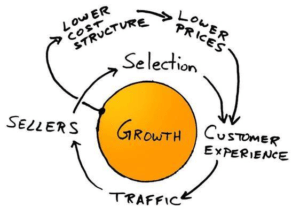
Bezos ended his 1997 letter by reminding Amazon’s shareholders that it was their responsibility to decide whether this was a thesis worth investing in. In the opinions of many analysts of the time, it was not.
His remark was that it was still “Day 1” on the internet. The building at Amazon headquarters where Bezos worked is now called “Day 1,” and he has signed off each letter with the reminder that it’s “still Day 1.” Those who invested with a similar goal of inventing each and every day have been rewarded.
Links to Jeff Bezos’ Shareholder Letters (1997-2020)
- Jeff Bezos’ 2020 Letter to Shareholders
- Jeff Bezos’ 2019 Letter to Shareholders
- Jeff Bezos’ 2018 Letter to Shareholders
- Jeff Bezos’ 2017 Letter to Shareholders
- Jeff Bezos’ 2016 Letter to Shareholders
- Jeff Bezos’ 2015 Letter to Shareholders
- Jeff Bezos’ 2014 Letter to Shareholders
- Jeff Bezos’ 2013 Letter to Shareholders
- Jeff Bezos’ 2012 Letter to Shareholders
- Jeff Bezos’ 2011 Letter to Shareholders
- Jeff Bezos’ 2010 Letter to Shareholders
- Jeff Bezos’ 2009 Letter to Shareholders
- Jeff Bezos’ 2008 Letter to Shareholders
- Jeff Bezos’ 2007 Letter to Shareholders
- Jeff Bezos’ 2006 Letter to Shareholders
- Jeff Bezos’ 2005 Letter to Shareholders
- Jeff Bezos’ 2004 Letter to Shareholders
- Jeff Bezos’ 2003 Letter to Shareholders
- Jeff Bezos’ 2002 Letter to Shareholders
- Jeff Bezos’ 2001 Letter to Shareholders
- Jeff Bezos’ 2000 Letter to Shareholders
- Jeff Bezos’ 1999 Letter to Shareholders
- Jeff Bezos’ 1998 Letter to Shareholders
- Jeff Bezos’ 1997 Letter to Shareholders
Source : https://www.cbinsights.com/research/bezos-amazon-shareholder-letters/

